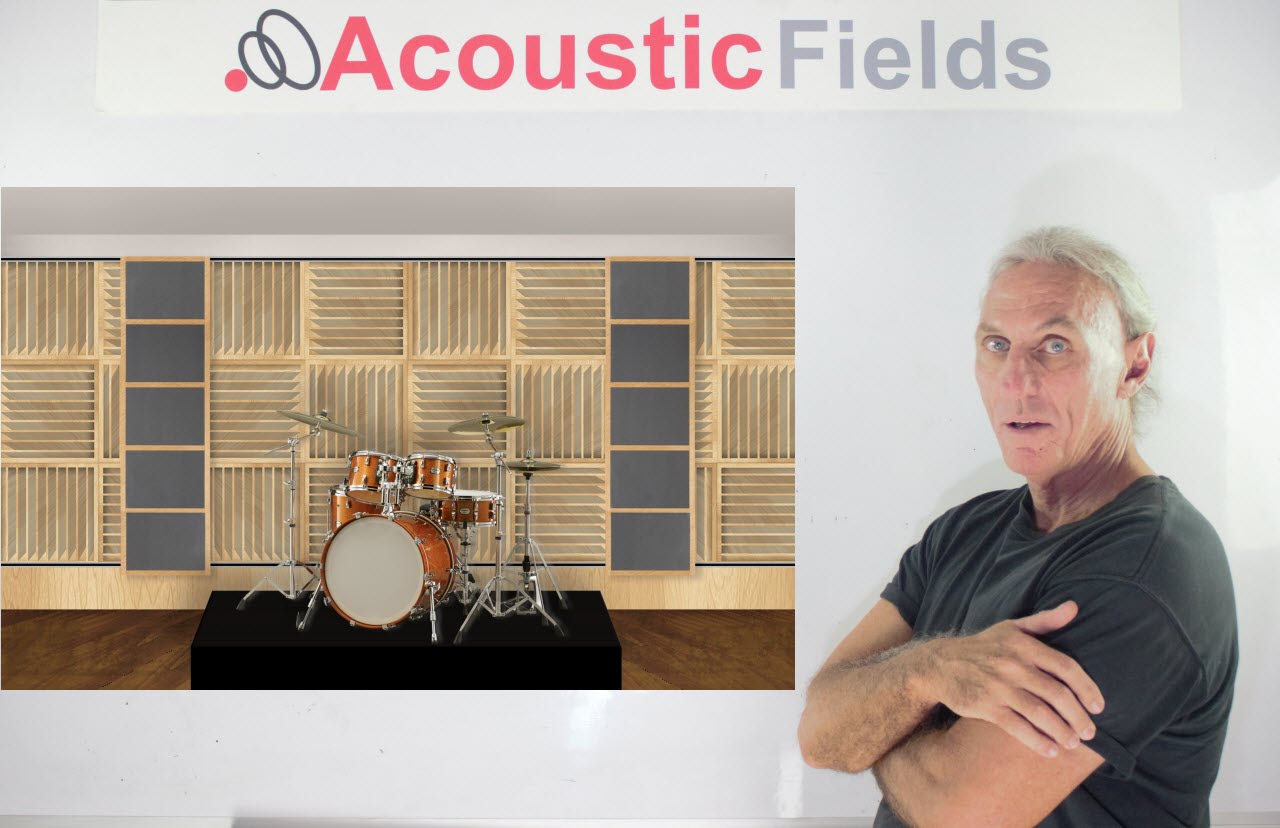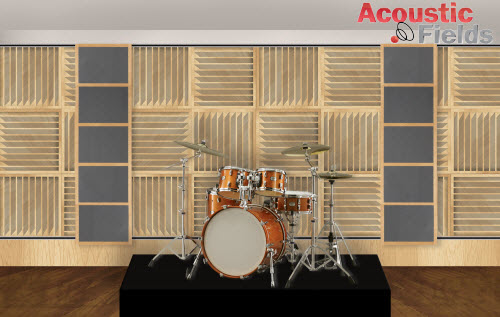This blog has been updated to reflect new information in regards to acoustic treatment for recording drums, updated on 11/11/19
Today we’re going to talk about acoustic treatment for recording drums. We got a lot of inquiries about people that want to record drums and usually the room is too small. I never see a situation where the room is too large. It’s always “how do we manage all this energy from a drum and how do we deal with it”. Let’s take a look.
Managing Energy in the Live Room
A live room is really the room that we’re going to call our drum room because that’s where we play live instruments. What we must do is to match the room volume to the drum or instrument output. Drums produce very large amounts of energy. With all of this energy, there has to be a balance between the size of the room that we use and how much energy we place within the room. We must match the room volume to the drum energy output. A kick drum will produce energy that is 30 – 40′ long. How is that energy going to fit into your room? It will not. When it does not, it will produce distortion that will be heard by our microphones.
Recording Studio Definition: https://en.wikipedia.org/wiki/Recording_studio
What Are We Dealing With in Terms of Frequency When We’re Talking About Drums?
We have a bass drum with 40 cycles, our toms are usually 80 cycles, our snares are 80 Hz. and up and our cymbals can go as high as 5 – 8k. We have pressure and reflection management issues that we have to deal with. Obviously reflection issues can be controlled a lot easier than pressure issues. We must also remember that with low-frequency pressure, we have middle and high-frequency harmonic issues. A 40 Hz. fundamental is an 80 Hz., 120 Hz., 160 Hz. and 200 Hz. harmonic issue.
Managing Pressure in the Room
Pressure issues are low-frequency issues. Those require special technologies. If we’re going to use a pressure management technology such as diaphragmatic absorption or membrane absorption, we have to locate that pressure management next to the source so a good place in a drum room is right underneath the drums. Make sure you have a platform that’s tuned to the proper frequencies that you want to manage so the microphone hears a good tight, solid drum response. Diaphragmatic absorption works really well for that. We’ve designed numerous platforms for drum situations. Our new studio in Hollywood, Los Angeles has a drum platform.
Acoustic Fields Drum Platform: https://www.acousticfields.com/product/drum-platform/
When you are dealing with the pressure that the drum kit is producing it is best to position the sonic sponge as close to the source as possible. That’ll give you strong, tight, definition, and help you control the extra pressure issues from long waves of energy that will not fit into your live room. Most live rooms today are much too small for drums. People place drums in small rooms and want big sound. It’s just not possible. You can bend the laws of physics, but you can not break them.
Thanks
Dennis Foley









A friend of mine, who’s a very serious drummer, wants to redo his practice room with the latest and greatest sound insulation products so he can practice without disturbing the rest of the house. Any recommendations?
J, No such thing as latest and greatest. You must first measure the noise you are dealing with and then build the barrier technology based on the noise measurements.
I have a small drum room and 2 tuned membrane absorbers. Should I place them on the walls next to the drumset or should i place them free standing right up close to the kick?
Its not enough surface area to have a quality impact no matter where you place it. With low frequency management it is all about surface area coverage.